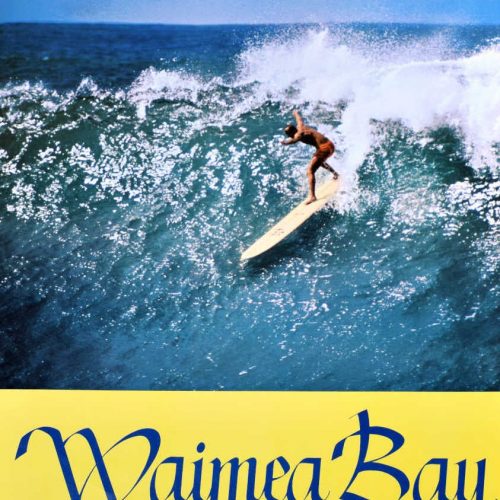-
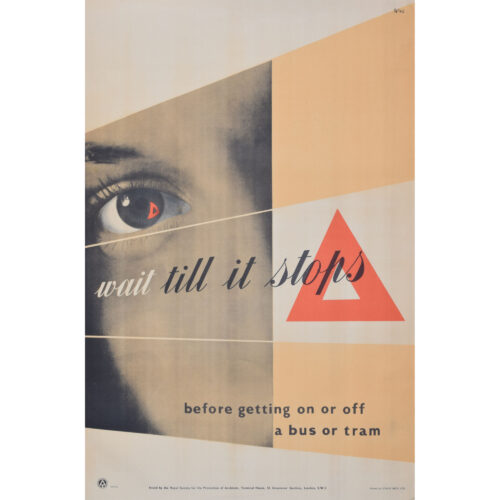
"Zero" Hans Schleger (1898 - 1976)
Wait till it stops before getting on or off a bus or tram
Original vintage poster 76 x 49 cm Hans Schleger was born in Germany. After the First World War, he studied at the Berlin Kunstgewerbeschule. After working in Berlin, he moved to New York in 1924 and began to work as a graphic designer. He returned to Berlin in 1929 and began working for the British advertising agency Crawfords, where he met Edward McKnight Kauffer, who introduced him to Jack Beddington (the head of advertising at Shell Mex BP). He moved to London following the rise of Hitler and produced a series of posters for Shell Mex. During the Second World War he worked for the British Government. He later taught at the Chicago Institute of Design and subsequently designed the trademarks of the John Lewis Partnership, Penguin, Deutsche Bank, and the Edinburgh Festival. Condition: generally very good, the odd gentle crease; not backed. If you are interested, please email info@manningfineart.co.uk or call us on 07929 749056. Click here for other original vintage posters. -
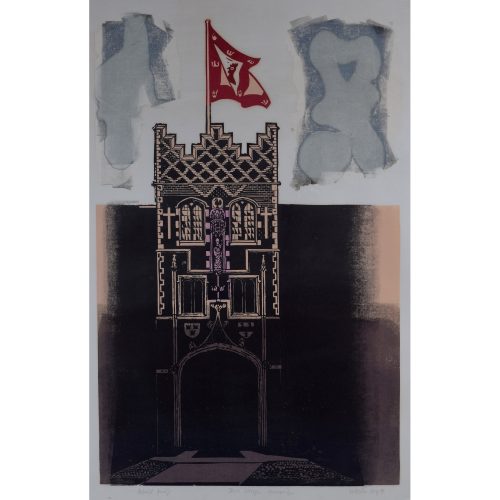
Walter Hoyle
Jesus College Cambridge
Linocut, 1965 76x48 cm Signed and titled in pencil. Printed on handmade Japanese Hosho paper by the artist at Editions Electo Click here for biographical details and other works by the artist. If you are interested email info@manningfineart.co.uk or call us on 07929 749056. -
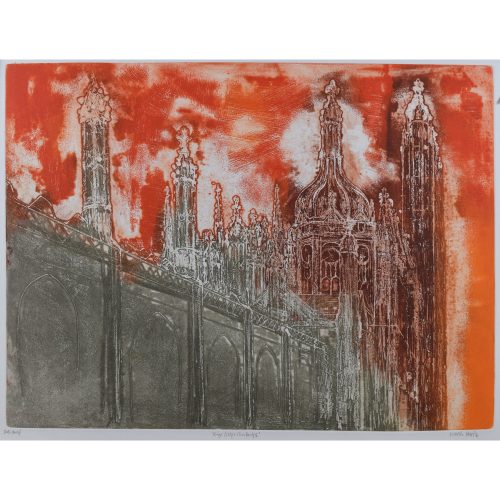
Walter Hoyle (1922 - 2000)
King's College Chapel, Cambridge in red (1965)
Linocut Cambridge Series State Proof, Signed and Titled in pencil. Printed by the artist at Editions Alecto51x69cm Condition: Excellent Click here for biographical details and other works by the artist. If you are interested email info@manningfineart.co.uk or call us on 07929 749056. -
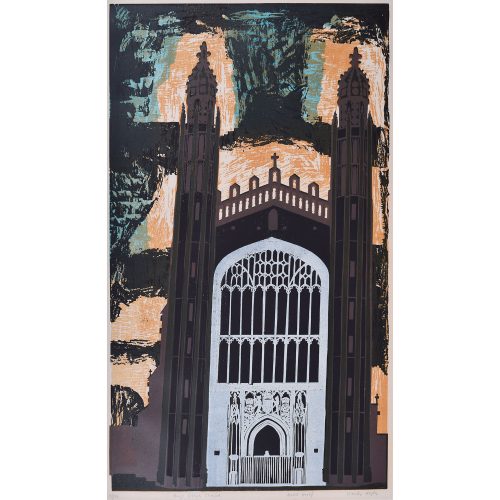
Walter Hoyle (1922 - 2000)
King's College Chapel West End, Cambridge (1965)
Linocut Cambridge Series 51/75, Signed and Titled. Printed by the artist at Editions Alecto71x41cm Click here for biographical details and other works by the artist. If you are interested email info@manningfineart.co.ukor call us on 07929 749056. -
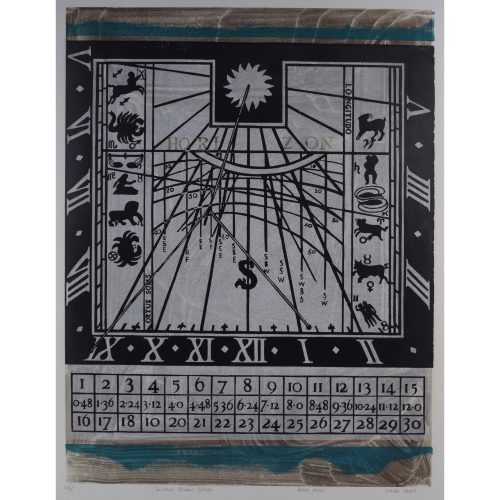
Walter Hoyle
Queens' College Cambridge, Sundial
Linocut, 1965 76x57 cm Signed numbered and titled in pencil. Printed on handmade Japanese Hosho paper by the artist at Editions Electo Click here for biographical details and other works by the artist. If you are interested email info@manningfineart.co.uk or call us on 07929 749056. -
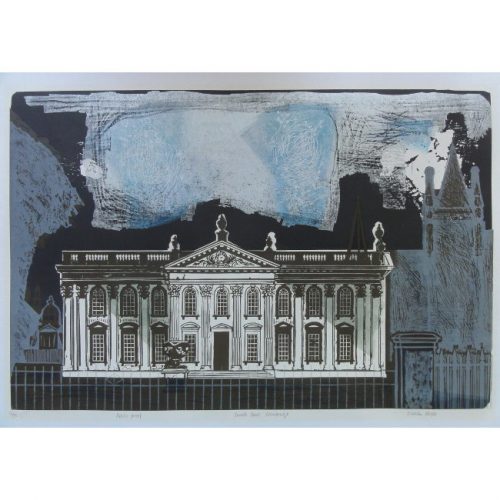
Walter Hoyle (1922-2000)
Senate House, Cambridge (Cambridge Series 1956-6)
Block print 72/75 Artist’s proof, published by Editions Alecto, London, 1966 46x89cm Click here for biographical details and other works by the artist. If you are interested email info@manningfineart.co.uk or call us on 07929 749056. -
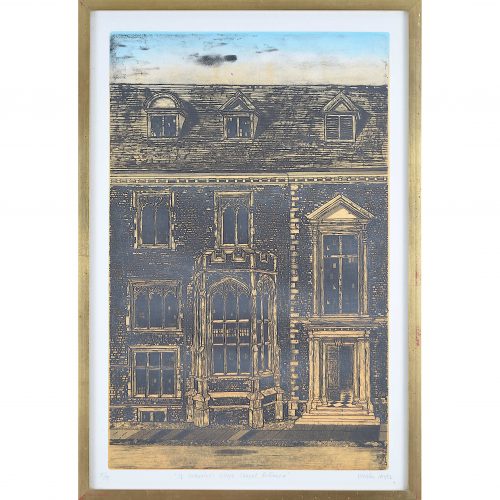
Walter Hoyle (1922-2000)
St Catharine's College, Cambridge (1956-66)
Linocut 59 x 39 cm Signed lower right; inscribed and numbered 35/75 in pencil. Hoyle trained at Beckenham School of Art and the Royal College of Art. At the latter he was strongly influenced by Edward Bawden, one of Britain’s greatest linocut printers. Bawden had been commissioned by the 1951 Festival of Britain to produce a mural for the South Bank, and chose Hoyle to assist on account of his great talent. Hoyle moved to Great Bardfield in Essex, becoming a part of the Great Bardfield group of artists; diverse in style, they created figurative work, in stark contrast to the abstract art of the St Ives artists at the opposite end of the country. Hoyle taught at St Martin’s School of Art from 1951-60, the Central School of Arts and Crafts from 1960-64, and the Cambridge School of Art from 1964-1985, during which time he launched Cambridge Print Editions. His work is held in the collections of the Tate Gallery, the Victoria and Albert Museum, The British Museum, Kettle’s Yard and the Fry Art Gallery. Condition: very good. -
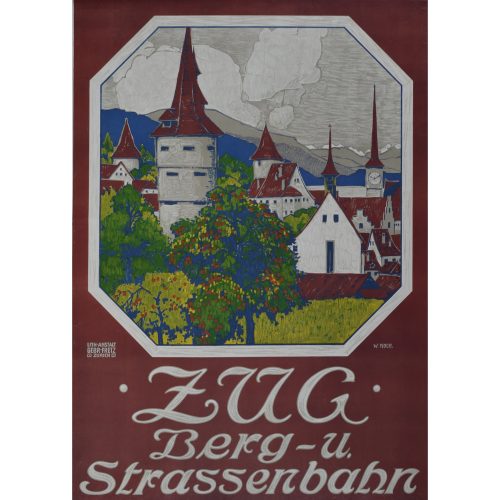
Walther Koch (1875-1915) Zug Berg und Strassenbahn
Original lithographic poster (1914) 40x30" Printed in Zurich by Anstalt Gebr Fretz If you are interested email info@manningfineart.co.uk or call us on 07929 749056. Condition: Excellent. -
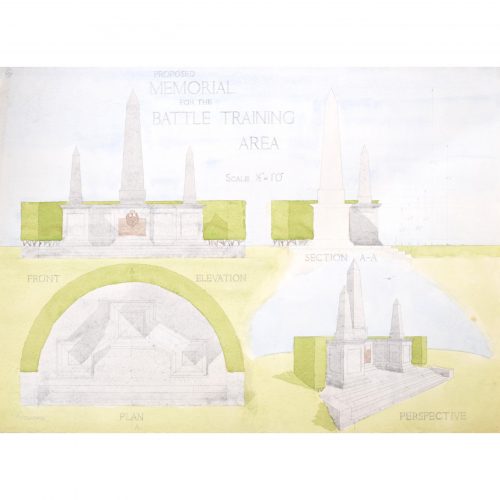
S Clapham (active 1940 - 1960)
Proposed Memorial for the Battle Training Area
Pencil wash 49 x 70 cm Signed lower left and inscribed to reverse. Clapham's designs for a modernist war memorial to be erected in a training area at an army base. Clapham was an architect based in Stockwell in London. Condition: generally very good; one small mark to far right towards bottom. If you are interested, please email info@manningfineart.co.uk or call us on 07929 749056. Click here for other works by the artist. -
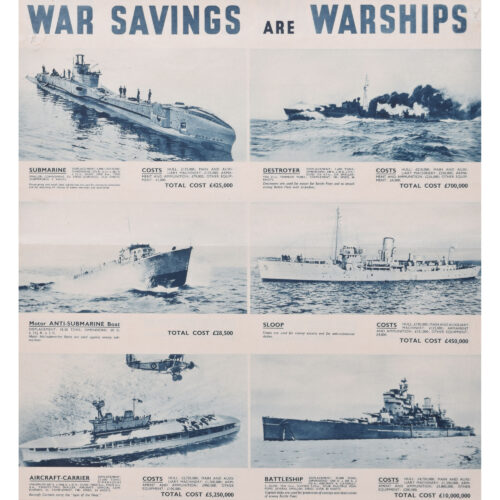
War Savings are Warships / The Signal is Save
Original vintage poster 41 x 37 cm Issued by the National Savings Committee, London, the Scottish Savings Committee, Edinburgh, and the Ulster Savings Committee, Belfast. An original vintage WW2 poster encouraging Britons to save via the National Savings scheme, which would use the money to fund warships. Condition: generally very good; central fold as issued, two pin holes to top corners only. Double sided. If you are interested, please email info@manningfineart.co.uk or call us on 07929 749056. Click here for other original vintage National Savings posters. -
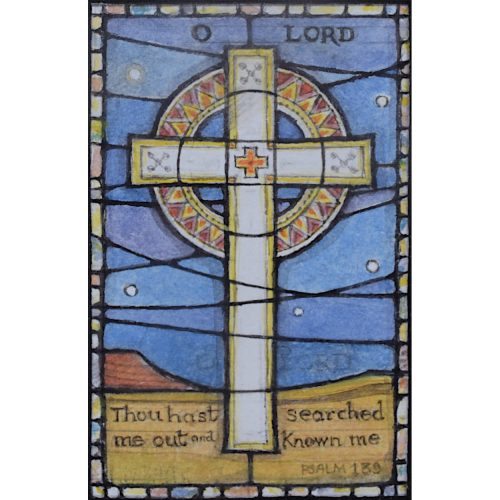
Jane Gray (b.1931)
Warrington Hospital Chapel, Design for Stained Glass Window (1984)
Watercolour 7.5 x 5 cm Dated, detailed in artist’s hand and studio label verso.Warrington Hospital was originally built as an isolation hospital in 1893. The Warrington Union Workhouse Infirmary was built on the site shortly after in 1898, and it was occupied by the Whitecross Military Hospital during the First World War. It wasn’t until 1930, that the infirmary officially became the Warrington Borough General Hospital. Gray’s design for this window in the hospital’s chapel wonderfully demonstrates her colourful, modern style and features the Cross suspended between land and sky, and a line from Psalm 139: ‘O Lord, Thou hast searched me out and known me’. This was one of Gray’s simplest but most favourite window designs, it was installed in the chapel in 1984.
Provenance: the artist’s studio sale. Literature: Jane Gray, Playing with Rainbows. (Shropshire: Ellingham Press, 2011), pp.23, 77. Condition: very good. If you are interested, please email info@manningfineart.co.uk or call us on 07929 749056. For other works by Jane Gray and more information about her, please click here. -
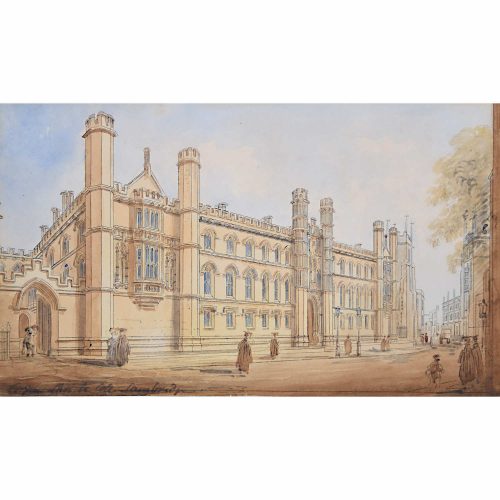
View of Corpus Christi College, Cambridge
Watercolour on paper 13.5 x 23cm A charming view of Corpus Christi College and assorted denizens of Cambridge. The college is notable as the only one founded by Cambridge townspeople; it was established in 1352 by the Guild of Corpus Christi and the Guild of the Blessed Virgin Mary, making it the sixth-oldest college in Cambridge. With around 250 undergraduates and 200 postgraduates, it also has the second smallest student body of the traditional colleges of the University, after Peterhouse. The College has traditionally been one of the more academically successful colleges in the University of Cambridge. It also ranks among the wealthiest Cambridge colleges in terms of fixed assets, being exceptionally rich in silver. Unsigned; labelled 'Corpus Christi Coll. Cambridge' in ink, lower left. If you’d like to know more, please email info@manningfineart.co.uk or call us on 07929 749056. -
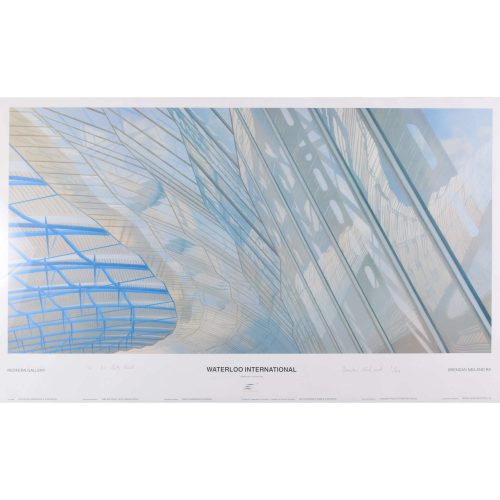
Brendan Neiland (b. 1941) R.A. (Expelled)
Waterloo International (1993)
Lithographic poster 101 x 60 cm Signed 'Brendan Neiland', numbered I/XII, and inscribed 'To Bob Reid' (Reid was Chairman of the British Railways Board from 1990 until 1995; he was present at Waterloo International Station prior to the opening of the Channel Tunnel). Neiland is known for his interpretations of city life. His work is widely exhibited in major museums and galleries worldwide including, in Britain, the Victoria and Albert Museum, The Tate Gallery London, The Collections of the British Council and the Arts Council of Great Britain. He is represented by the Redfern Gallery and has had numerous shows internationally, including at the Galerie Belvedere in Singapore, who represent him in Singapore and the Far East. Reflected architecture is one of Neiland’s most recurring themes. Condition: very good. If you are interested, please email info@manningfineart.co.uk or call us on 07929 749056. Click here for other works by Brendan Neiland. -
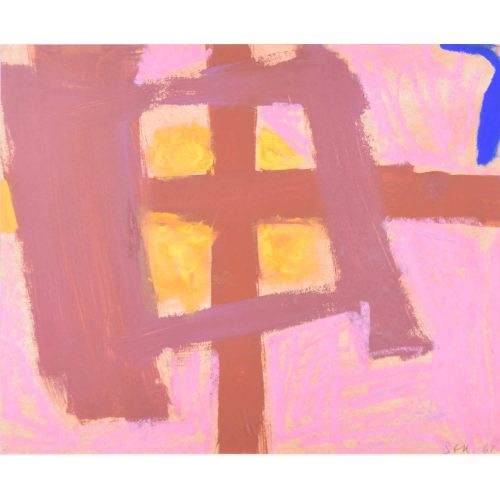
Trevor Bell (1930 - 2017)
Way Out Blue (1961)
Acrylic on paper 35 x 43 cm Signed and dated lower right. Bell's rosy-hued abstract composition is perhaps evoking an interior with window and curtains. The deep azure blue of the picture's title appears at the top right of the composition, curving away from the rest of the image. A sunny golden yellow drips in through the window panes, imbuing the scene with a hot, heady romanticism. Bell's idiosyncratic pictorial language allows us to experience the scene's hazy summer heat via the forms of sun, window, and wall. Bell was born in Leeds in 1930 and attended Leeds College of Art from 1947 to 1952 in a scholarship. The artist Terry Frost encouraged him to move to Cornwall, where he soon became a leading figure in the younger generation of the St Ives school. His first solo exhibition came in 1958, and the year after he was awarded the Paris Biennale International Painting Prize. The Tate began collecting his work in the 1960s, and Bell spent more time working and teaching in America. The Tate's 1985 St Ives exhibition featured Bell's work, and he was also included in the Tate St Ives' inaugural show. He returned from America in 1996 and settled down in isolated barn- and farmhouse-conversion studios near Penzance in Cornwall. He exhibited across England and America for the rest of his life, notably with his major solo exhibition at the Tate St Ives in 2004. Much of his work considers form and landscape via a dramatic use of colour and often on unusually-shaped (and sometimes multi-part) canvases. Condition: very good. If you’d like to know more, please email info@manningfineart.co.uk or call us on 07929 749056. -
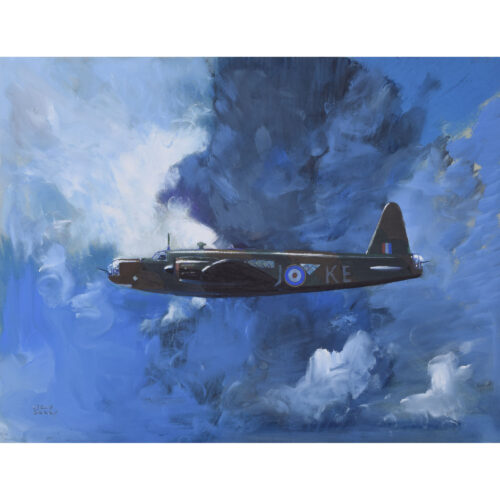
Leslie Carr (1891 - 1969)
Wellington Bomber
Gouache 23 x 30 cm Signed lower right. A Wellington Bomber set against a torrid blue sky. The Vickers Wellington was a British twin-engined, long-range medium bomber. It was designed during the mid-1930s at Brooklands in Weybridge, Surrey. Led by Vickers-Armstrongs' chief designer Rex Pierson; a key feature of the aircraft is its geodetic airframe fuselage structure, which was principally designed by Barnes Wallis. Development had been started in response to Air Ministry Specification B.9/32, issued in the middle of 1932, for a bomber for the Royal Air Force. This specification called for a twin-engined day bomber capable of delivering higher performance than any previous design. Other aircraft developed to the same specification include the Armstrong Whitworth Whitley and the Handley Page Hampden. During the development process, performance requirements such as for the tare weight changed substantially, and the engine used was not the one originally intended. The Wellington was used as a night bomber in the early years of the Second World War, performing as one of the principal bombers used by Bomber Command. During 1943, it started to be superseded as a bomber by the larger four-engined "heavies" such as the Avro Lancaster. The Wellington continued to serve throughout the war in other duties, particularly as an anti-submarine aircraft. It holds the distinction of having been the only British bomber that was produced for the duration of the war, and of having been produced in a greater quantity than any other British-built bomber. The Wellington remained as first-line equipment when the war ended, although it had been increasingly relegated to secondary roles. The Wellington was one of two bombers named after Arthur Wellesley, 1st Duke of Wellington, the other being the Vickers Wellesley. A larger heavy bomber aircraft designed to Specification B.1/35, the Vickers Warwick, was developed in parallel with the Wellington; the two aircraft shared around 85% of their structural components. Many elements of the Wellington were also re-used in a civil derivative, the Vickers VC.1 Viking. Leslie Carr was a painter and poster designer from London. He served in the Tank Corps in the First World War and then became a professional artist, mainly producing maritime and architectural scenes. He designed posters for Southern Railway, the London and North Eastern Railway, and British Railways (among others). Carr served as a fireman in the Second World War and was a part of several firemen artists' exhibitions. Carr was a member of the Society of Marine Artists. Condition: very good. If you are interested, please email info@manningfineart.co.uk or call us on 07929 749056. Click here for other Second World War pictures. -
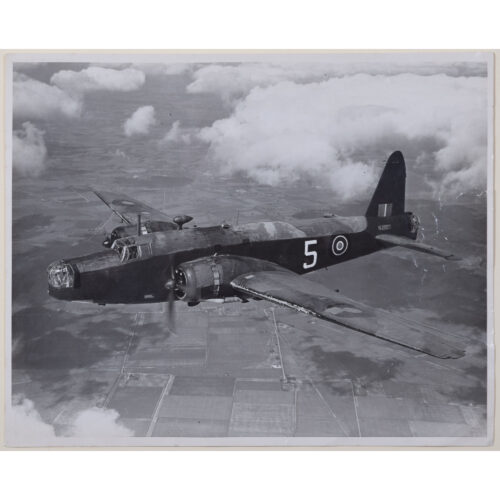
Charles E Brown (1896 - 1982)
Wellington Bomber
Silver gelatin photograph 20 x 25 cm The Vickers Wellington was a British twin-engined, long-range medium bomber. It was designed during the mid-1930s at Brooklands in Weybridge, Surrey. Led by Vickers-Armstrongs’ chief designer Rex Pierson; a key feature of the aircraft is its geodetic airframe fuselage structure, which was principally designed by Barnes Wallis. Development had been started in response to Air Ministry Specification B.9/32, issued in the middle of 1932, for a bomber for the Royal Air Force. This specification called for a twin-engined day bomber capable of delivering higher performance than any previous design. Other aircraft developed to the same specification include the Armstrong Whitworth Whitley and the Handley Page Hampden. During the development process, performance requirements such as for the tare weight changed substantially, and the engine used was not the one originally intended. The Wellington was used as a night bomber in the early years of the Second World War, performing as one of the principal bombers used by Bomber Command. During 1943, it started to be superseded as a bomber by the larger four-engined “heavies” such as the Avro Lancaster. The Wellington continued to serve throughout the war in other duties, particularly as an anti-submarine aircraft. It holds the distinction of having been the only British bomber that was produced for the duration of the war, and of having been produced in a greater quantity than any other British-built bomber. The Wellington remained as first-line equipment when the war ended, although it had been increasingly relegated to secondary roles. The Wellington was one of two bombers named after Arthur Wellesley, 1st Duke of Wellington, the other being the Vickers Wellesley. A larger heavy bomber aircraft designed to Specification B.1/35, the Vickers Warwick, was developed in parallel with the Wellington; the two aircraft shared around 85% of their structural components. Many elements of the Wellington were also re-used in a civil derivative, the Vickers VC.1 Viking. Leslie Carr was a painter and poster designer from London. He served in the Tank Corps in the First World War and then became a professional artist, mainly producing maritime and architectural scenes. He designed posters for Southern Railway, the London and North Eastern Railway, and British Railways (among others). Carr served as a fireman in the Second World War and was a part of several firemen artists’ exhibitions. Carr was a member of the Society of Marine Artists. Charles E Brown was an aviation photographer. His archive of 30,000 images has been held by the RAF Museum in Hendon since 1978. Condition: generally good; a few old creases and a short (repaired) tear top right approx 1 cm long. If you are interested, please email info@manningfineart.co.uk or call us on 07929 749056. Click here for other Second World War pictures. -
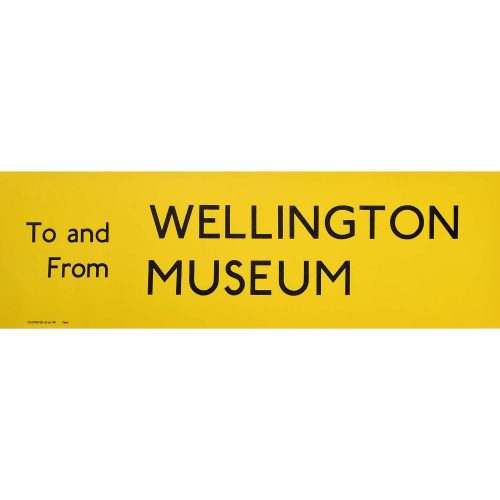
Wellington Museum Routemaster Slipboard Poster c1970
Screenprint poster 64x19cm Printed for London Transport for use on Routemaster or RT busses. If you are interested email info@manningfineart.co.uk or call us on 07929 749056. Condtion: Excellent -
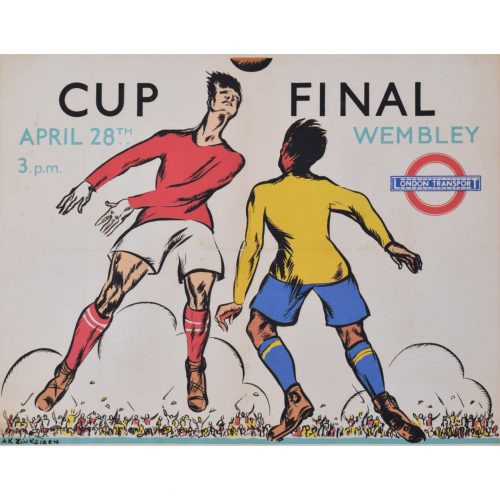
Anna Zinkeisen (1901 - 1976)
Wembley Cup Final (1934)
Lithographic poster 40 x 50 cm Signed in plate lower left, numbered 34/760, and printed by the DPC (Dangerfield Printing Company) for London Transport. Anna Zinkeisen created this design in 1934 for London Transport as a panel poster (12.5 x 10", for display within underground carriages or on buses). The Cup Final that year was between Manchester City and Portsmouth; Manchester City triumphed with a 2-1 scoreline. This particular lithograph from the same time was produced to a slightly larger scale than the panel poster, and is not recorded in the London Transport Museum archives. The process of lithography requires a skilled operator to draw a negative image on a stone plate (the Greek word 'lithos' meaning 'stone') - one plate for each colour in the image. The stone is then treated with acid and etched in a way as to produce a printing plate which can then be inked. Printing at different sizes therefore required the manual creation of new plates, and small differences between different sized versions are thus visible. Anna Zinkeisen won a scholarship to the Royal Academy Schools in 1916, focusing on sculpture and exhibiting at the Royal Academy in 1919. She was awarded the Landseer Award in 1920 and 1921, and went on to become an esteemed portrait artist, often of society ladies. She produced a series of posters for London Transport in the inter-war period. During the Second World War, Zinkeisen became a nurse, and was profoundly affected by the suffering she saw during her time working in St Mary's Hospital. This is arguably the point at which she and her sister Doris reached the pinnacle of their careers, producing some of the finest and most affecting depictions of the world at war made during this period. Condition: good. Backed to conservation paper; small loss to bottom left-hand corner and slight toning to extremities. If you’d like to know more, please email info@manningfineart.co.uk or call us on 07929 749056. -
Out of stock
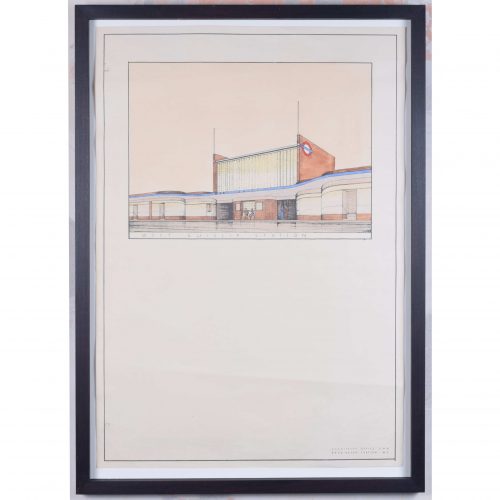
Brian Bannatyne Lewis (1906 - 1991)
West Ruislip Station (1938)
Pen, ink and watercolour 70 x 50 cm A 1938 design for the new West Ruislip tube station, commissioned by the Great Western Railway (GWR) for its proposed western extension to the Central Line. The design's Art Deco lettering befits London Transport's aesthetic in the 1930s. Lewis brings his designs to life by including smartly-dressed characters entering and leaving the stations. The Central line opened in 1900, between Shepherd's Bush and Bank; it extended westwards to Ealing Broadway in 1920. Two years after the formation of London Transport in 1933, an extensive New Works Programme began, proposing a westwards extension of the line to Denham. Brian Lewis created designs for nine stations in early 1938, but the Second World War broke out before they could be built. By the time the extension had been built, Lewis was no longer chief architect of the GWR - the stations were modified and completed by Frederick Francis Charles Curtis instead. The extension to Greenford opened in 1947 and finally reached West Ruislip in 1948. Denham never actually became part of the tube line, owing to the establishment of the green belt. Brian Lewis was born in Tasmania, attended school in Melbourne, and subsequently obtained a Diploma in Architecture in 1928 from the University of Melbourne. He then moved to the UK to study at the Liverpool School of Architecture, winning scholarships in each of his three years of study to fund extensive European travel. He married a fellow Liverpool architectural student, Hilary Archer. After moving to London, he took up employment with the GWR in their architects’ office; he also lectured at a local polytechnic, and moonlighted with his wife at home on mainly residential commissions – rather different projects from the hotels and stations which GWR commissioned from him. He exhibited frequently at the Royal Academy of Arts, showing superb measured drawings of historic buildings. In the Second World War he enlisted with the Second Imperial Australian Force, serving in the Middle East, then transferred to the Royal Australian Engineers where he became a Captain. In 1943 he was sent to London to help GWR repair bomb damage. Lewis became Chief Architect of GWR in 1945 (following the retirement of the noted Percy Emerson Culverhouse), and the first Chair of Architecture at Melbourne University in 1947. He also became the consulting architect for the major buildings of the Australian National University in Canberra, producing an imaginative site plan and designing University House, which was awarded the Sulman medal in 1954. He also designed the Risdon Prison Complex in 1960. He retired in 1971 to paint watercolours and write his memoirs. Condition: generally very good; a few handling marks and two holes from filing. Handsomely framed. If you are interested, please email info@manningfineart.co.uk or call us on 07929 749056. Click here to view the other station designs in the set.

